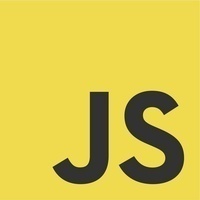Need advice about which tool to choose?Ask the StackShare community!
Erlang vs R: What are the differences?
Introduction
In this article, we will discuss the key differences between Erlang and R. Both Erlang and R are programming languages used in different domains. While Erlang is primarily used for developing scalable and fault-tolerant distributed systems, R is a language focused on statistical computing and graphics.
Concurrency and Fault-Tolerance: One of the major differences between Erlang and R is in their support for concurrency and fault-tolerance. Erlang was designed from the ground up to handle concurrent and distributed systems, making it highly efficient in handling multiple processes and nodes. On the other hand, R lacks built-in support for concurrency and fault-tolerance, which can limit its scalability in distributed environments.
Functional Programming Paradigm: Erlang is a functional programming language, which means it relies heavily on immutable data and functions without side effects. This makes it easier to reason about the behavior of the program and leads to highly reliable and maintainable code. In contrast, while R does support functional programming concepts, it also allows for imperative and object-oriented programming styles, giving developers more flexibility but potentially introducing complexity and bugs.
Built-in Concurrency Constructs: Erlang provides built-in concurrency constructs like processes, message passing, and selective receives, which make it easy to write concurrent and distributed applications. These constructs are crucial for creating fault-tolerant and highly available systems. In contrast, R lacks such built-in constructs, which can make it more challenging to write concurrent programs and handle distributed computations.
Statistical Computing and Analysis: R is well-known for its rich set of libraries and tools for statistical computing, analysis, and data visualization. It provides a wide range of statistical models, machine learning algorithms, and data manipulation functions. This makes R an ideal choice for data scientists and statisticians working on data-intensive projects. On the other hand, Erlang does not have extensive built-in support for statistical computing and analysis. While it is possible to use external libraries, Erlang's primary focus is on building scalable and fault-tolerant systems rather than statistical analysis.
Concurrency Granularity: In Erlang, lightweight processes are used to achieve concurrency, where each process can handle millions of processes efficiently. This fine-grained concurrency allows for the efficient utilization of system resources and enables high scalability. In contrast, R mainly relies on multi-threading to achieve concurrency, but it has limitations due to the Global Interpreter Lock (GIL) in the underlying implementation, which can restrict the scalability of concurrent programs.
Community and Industry Use: The communities and industry use cases of Erlang and R differ significantly. Erlang has gained popularity for its use in building highly scalable and fault-tolerant systems, particularly in the telecom industry. It has been widely adopted by companies like Ericsson and WhatsApp, where the focus is on handling massive concurrent loads. On the other hand, R has a strong presence in the domain of data science and statistical analysis. It is heavily used by researchers, statisticians, and organizations working with large datasets for analysis and visualization.
Summary
In summary, Erlang excels in concurrency, fault-tolerance, and building distributed systems, whereas R is renowned for statistical computing, analysis, and data visualization.
MACHINE LEARNING
Python is the default go-to for machine learning. It has a wide variety of useful packages such as pandas and numpy to aid with ML, as well as deep-learning frameworks. Furthermore, it is more production-friendly compared to other ML languages such as R.
Pytorch is a deep-learning framework that is both flexible and fast compared to Tensorflow + Keras. It is also well documented and has a large community to answer lingering questions.
Pros of R Language
- Data analysis86
- Graphics and data visualization64
- Free55
- Great community45
- Flexible statistical analysis toolkit38
- Easy packages setup27
- Access to powerful, cutting-edge analytics27
- Interactive18
- R Studio IDE13
- Hacky9
- Shiny apps7
- Shiny interactive plots6
- Preferred Medium6
- Automated data reports5
- Cutting-edge machine learning straight from researchers4
- Machine Learning3
- Graphical visualization2
- Flexible Syntax1
Cons of R Language
- Very messy syntax6
- Tables must fit in RAM4
- Arrays indices start with 13
- Messy syntax for string concatenation2
- No push command for vectors/lists2
- Messy character encoding1
- Poor syntax for classes0
- Messy syntax for array/vector combination0

































